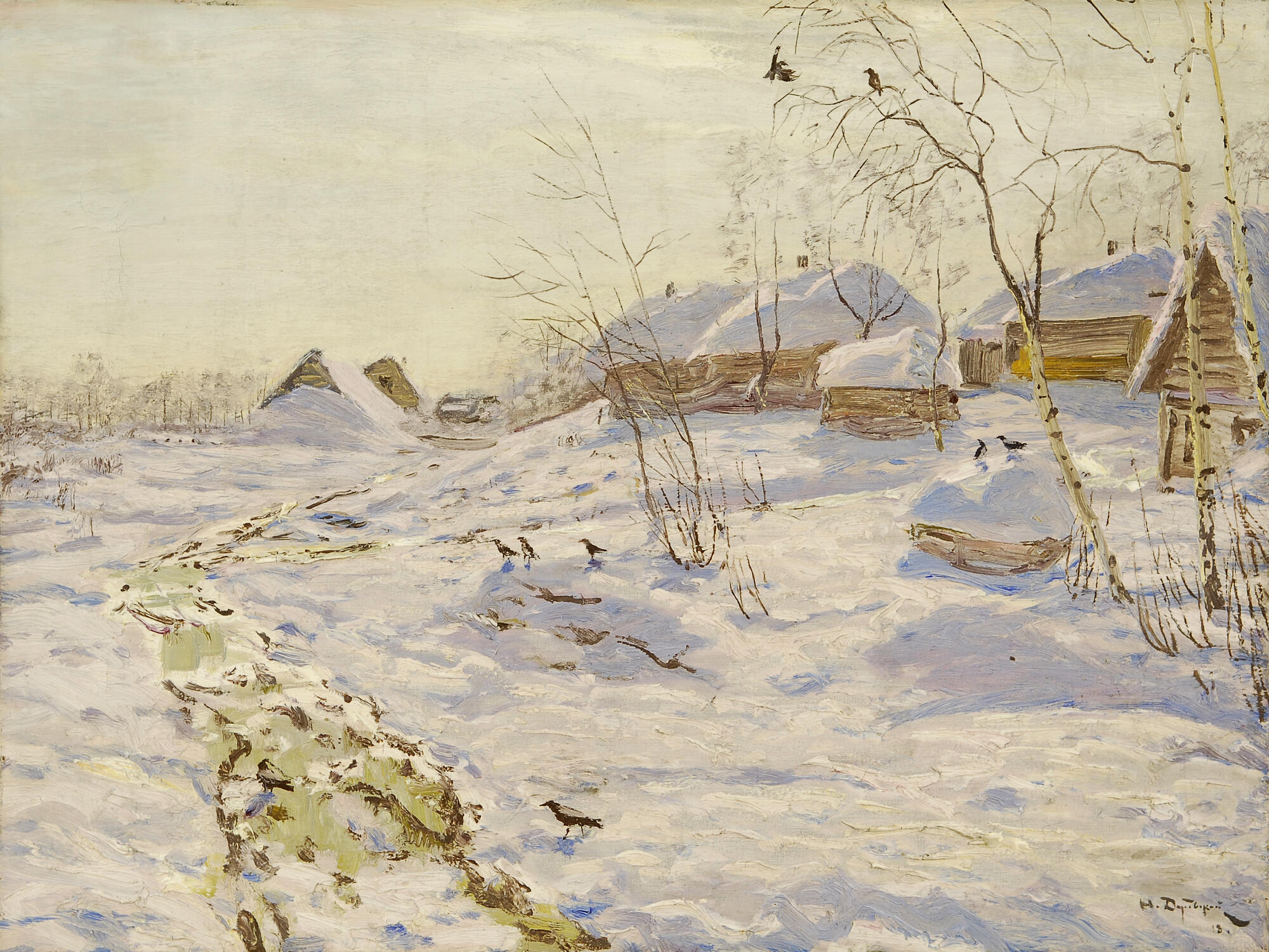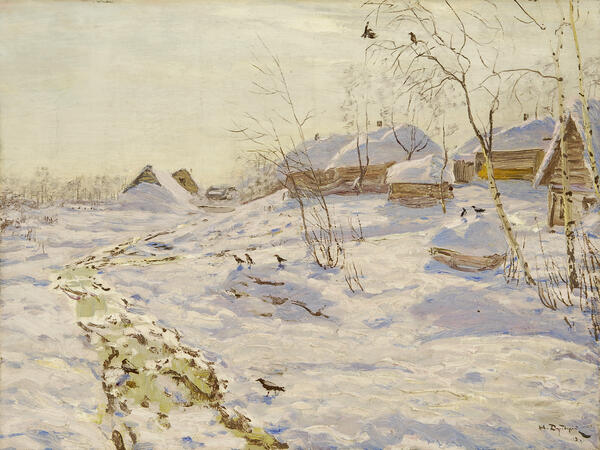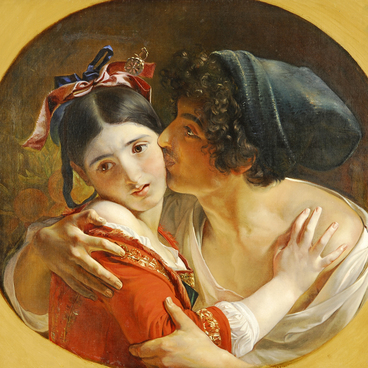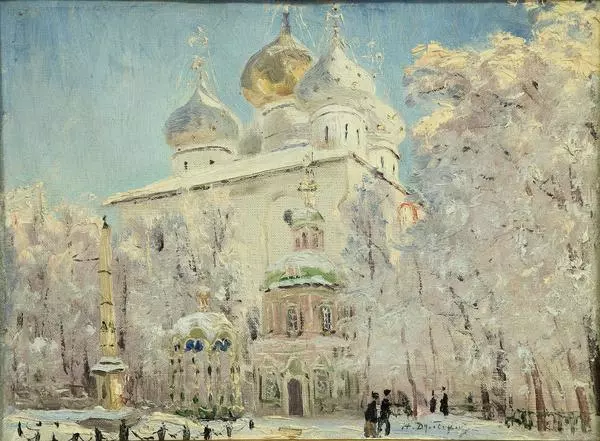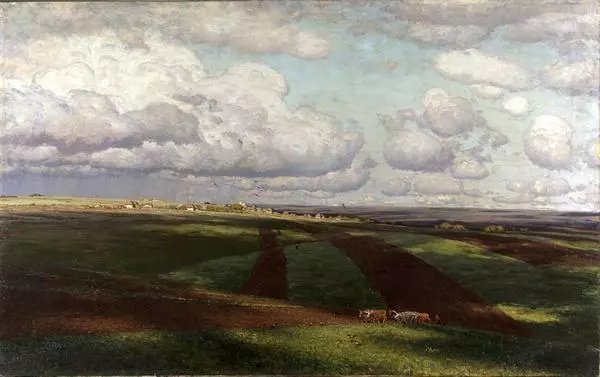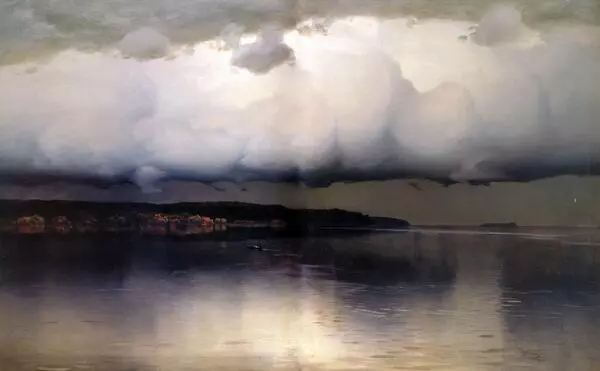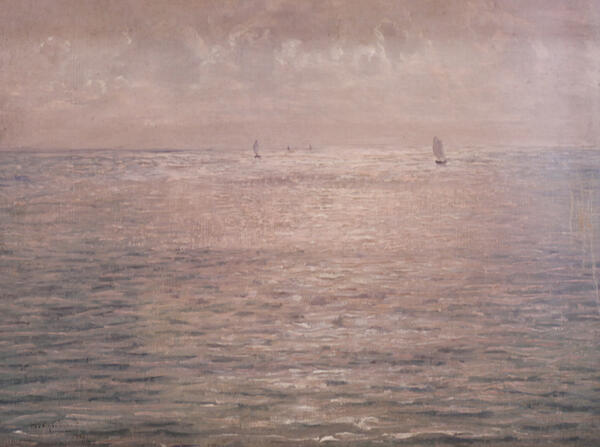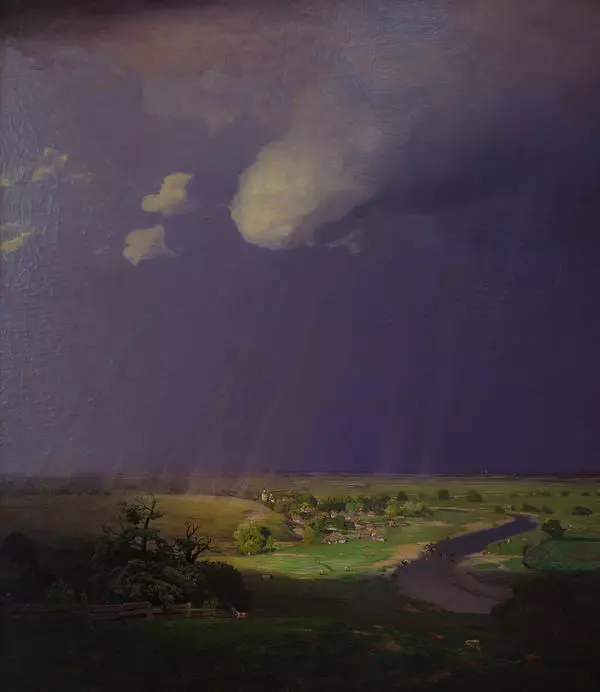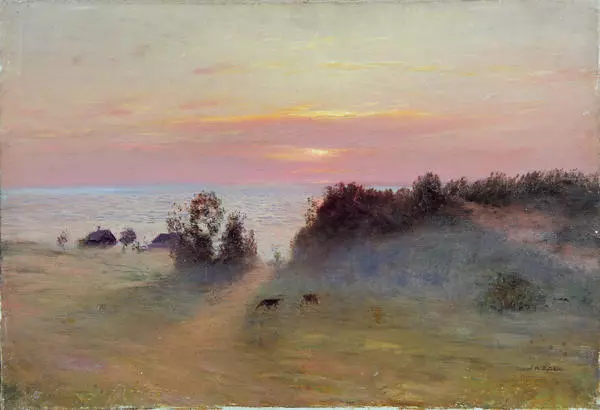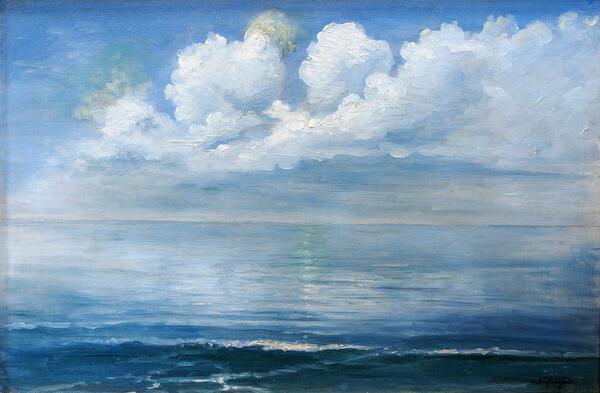Nikolay Dubovskoy created the painting ‘Winter, ” in 1918. He portrayed snow-covered homes in an area outside a village on a nice sunny day. The painted snow takes up most of the space on the canvas, and amidst all that snow a melted pathway going off into the distance can be seen. The bright sun colored the landscape in warm shades, which emphasized the soft white snow and the depth of the blue shadows.
Nikolay Dubovskoy painted this canvas using the impasto technique. This type of method shows that the artist has applied thick brush strokes on the canvas, which does an excellent job of making the relief visible. The paste works in the opposite way glazing would. The artists work with thick layers of paint instead of the thinnest layers of translucent paint.
Nikolay Dubovskoy has done an excellent job painting the light, air, and space in his paintings. The artist had carefully worked on the lighting effects. During his work sessions, he would forget about everything. There were jokes told about his devotion to art. They said that once he got so carried away by a drawing that he almost forgot about his own wedding and arrived at the church right before they decided to stop waiting for him.
Back in the 1880s, Nikolay Dubovskoy joined ‘The society for Travelling art Exhibitions.’ The Itinerants were against academic art. They did not want to create paintings with themes far from realism. They believed that the Central Russian landscape, everyday life, and portraits of contemporaries were of the greatest artistic value.
Nikolay Dubovskoy, Isaac Levitan and other well-known Itinerants developed a new direction in painting — ‘mood landscape’. In those landscapes, the surrounding world became a reflection of human emotions. The composition and color did not photographically depict the area, but reinterpreted it poetically — the landscape in the painting seemed to have adopted the author’s mood and could be “sad”, “joyful”, or “disturbing”.
The artist’s works were very popular, and appreciated by Emperor Alexander III and the art collector Pavel Tretyakov. Nikolay Dubovskoy painted this piece when he was already an expert artist. Today his works are showcased in more than 70 museums in Russia and throughout the world.
